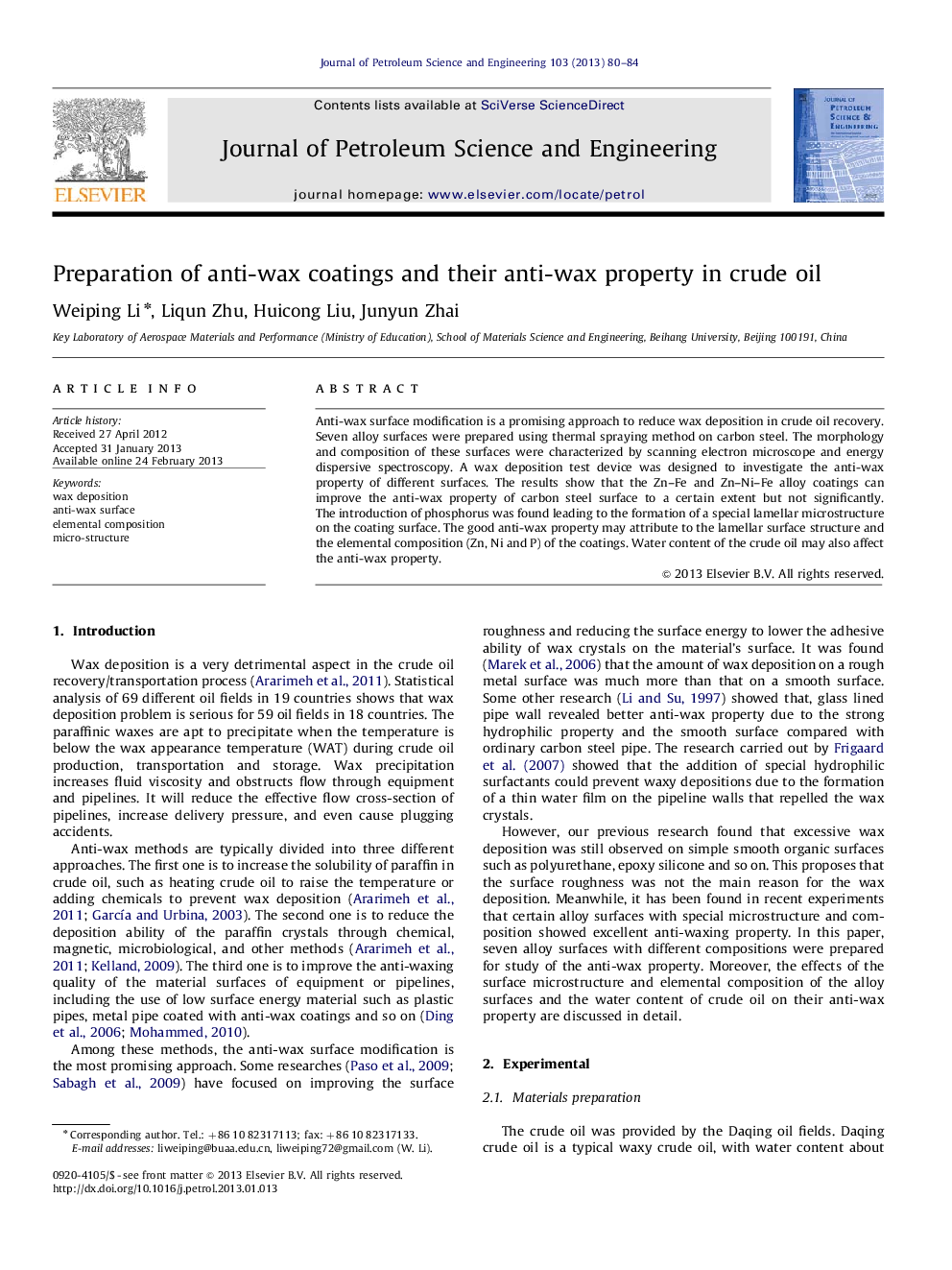| کد مقاله | کد نشریه | سال انتشار | مقاله انگلیسی | نسخه تمام متن |
|---|---|---|---|---|
| 1755322 | 1522838 | 2013 | 5 صفحه PDF | دانلود رایگان |

Anti-wax surface modification is a promising approach to reduce wax deposition in crude oil recovery. Seven alloy surfaces were prepared using thermal spraying method on carbon steel. The morphology and composition of these surfaces were characterized by scanning electron microscope and energy dispersive spectroscopy. A wax deposition test device was designed to investigate the anti-wax property of different surfaces. The results show that the Zn–Fe and Zn–Ni–Fe alloy coatings can improve the anti-wax property of carbon steel surface to a certain extent but not significantly. The introduction of phosphorus was found leading to the formation of a special lamellar microstructure on the coating surface. The good anti-wax property may attribute to the lamellar surface structure and the elemental composition (Zn, Ni and P) of the coatings. Water content of the crude oil may also affect the anti-wax property.
► Seven coatings with different compositions were prepared for wax deposition test.
► P improves the anti-wax property for both Zn–Fe–P and Zn–Ni–Fe-P coatings.
► Special lamellar microstructure plays a critical role for coating anti-wax property.
► Water content in crude oil can influence wax deposition.
► Zn–Ni–Fe–P coatings perform stable anti-wax property in crude oil with 10–90% water.
Journal: Journal of Petroleum Science and Engineering - Volume 103, March 2013, Pages 80–84